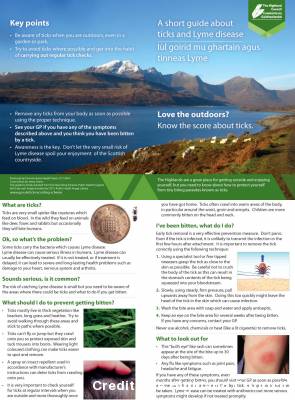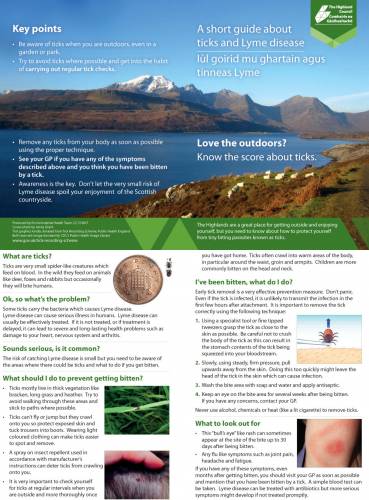Tick Awareness
Remember to check yourself for ticks after each run.
Ticks are very small spider-like creatures which feed on blood. In the wild they feed on animals like deer, foxes and rabbits but occasionally they will bite humans.
Ticks are common in the competition areas. Check carefully for ticks after each run and remove them (the recommended method is using an 'O-Tom'). Lyme disease does also occur in the area; if you develop a rash at the site of a tick bite, you are advised to seek medical advice.
Ok, so what’s the problem?
Early tick removal is a very effective prevention measure. Don’t panic. Even if the tick is infected, it is unlikely to transmit the infection in the first few hours after attachment. It is important to remove the tick correctly using the following technique:
Some ticks carry the bacteria which causes Lyme disease.
Lyme disease can cause serious illness in humans. Lyme disease can usually be effectively treated. If it is not treated, or if treatment is delayed, it can lead to severe and long-lasting health problems such as damage to your heart, nervous system and arthritis.
Sounds serious, is it common?
The risk of catching Lyme disease is small but you need to be aware of the areas where there could be ticks and what to do if you get bitten.
What should I do to prevent getting bitten?
• Ticks mostly live in thick vegetation like bracken, long grass and heather. Try to avoid walking through these areas and stick to paths where possible.
• Ticks can’t fly or jump but they crawl onto you so protect exposed skin and tuck trousers into boots. Wearing light coloured clothing can make ticks easier to spot and remove.
What to look out for
• A spray on insect repellent used in accordance with manufacturer’s instructions can deter ticks from crawling onto you.
• It is very important to check yourself for ticks at regular intervals when you are outside and more thoroughly once you have got home. Ticks often crawl into warm areas of the body, in particular around the waist, groin and armpits. Children are more commonly bitten on the head and neck.
I’ve been bitten, what do I do?
Early tick removal is a very effective prevention measure. Don’t panic. Even if the tick is infected, it is unlikely to transmit the infection in the first few hours after attachment. It is important to remove the tick correctly using the following technique:
1. Using a specialist tool or fine tipped tweezers grasp the tick as close to the skin as possible. Be careful not to crush the body of the tick as this can result in the stomach contents of the tick being squeezed into your bloodstream.
2. Slowly, using steady, firm pressure, pull
upwards away from the skin. Doing this too quickly might leave the head of the tick in the skin which can cause infection.
3. Wash the bite area with soap and water and apply antiseptic.
4. Keep an eye on the bite area for several weeks after being bitten. If you have any concerns, contact your GP.
What to look out for
• This “bull’s eye” like rash can sometimes appear at the site of the bite up to 30 days after being bitten.
• Any flu like symptoms such as joint pain, headache and fatigue.
If you have any of these symptoms, even
months after getting bitten, you should visit your GP as soon as possible and mention that you have been bitten by a tick. A simple blood test can be taken. Lyme disease can be treated with antibiotics but more serious symptoms might develop if not treated promptly.

Tick leaflet image (Full size)
